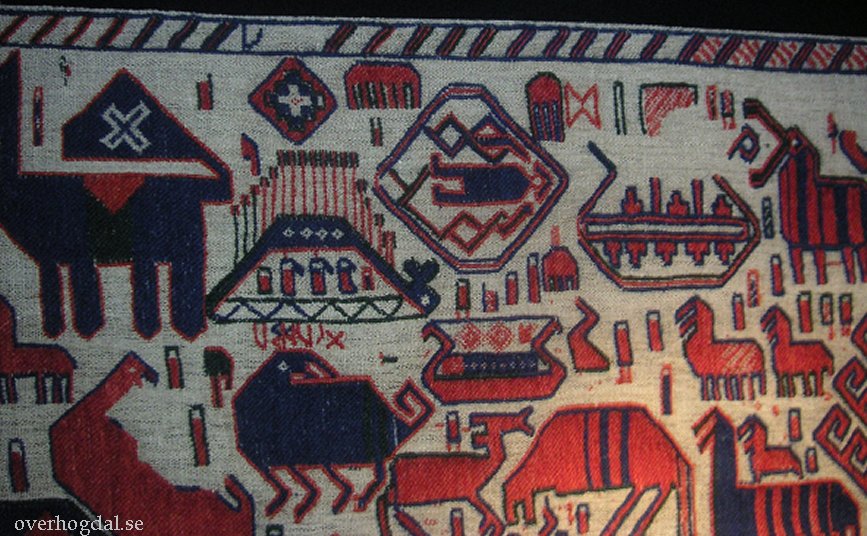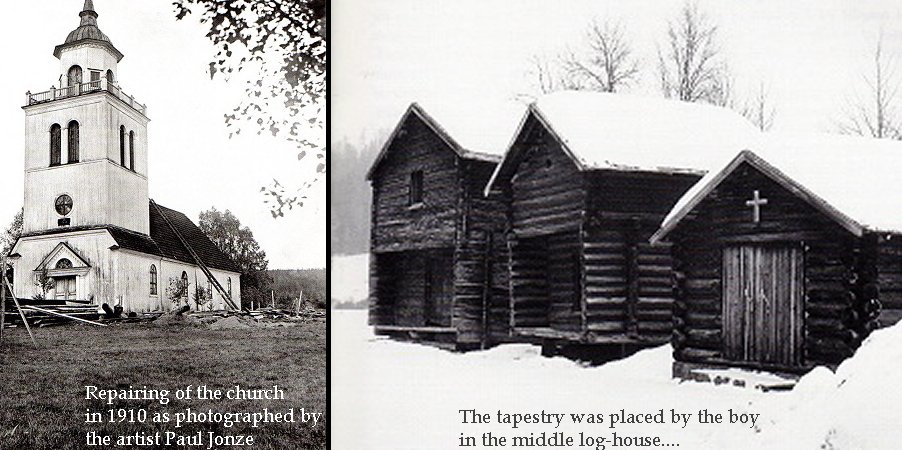Överhogdal Tapestry: Amazingly Well-Preserved Ancient Textiles With Norse And Christian Motifs
A. Sutherland - AncientPages.com - The Överhogdal Tapestry (in Swedish: Överhogdalstapeten) represents a group of amazingly well-preserved and the most complete ancient textiles found in Europe.
This imaginative creation with strong colors and distinctive shapes was created by an unknown artist. The tapestry was accidentally found by a fourteen-year-old boy helping in the sacristy of the local church at Överhogdal, a small town south of Östersund, Sweden in 1909.
Unaware of what he really found, the boy put the dirty bundle in the church's log house. Next year, the textiles were finally brought by the artist Paul Jonze to Östersund.
The fascinating Överhogdal tapestry composed of five assembled lengths was cleaned, repaired provisionally, and for the first after many centuries, they revealed their beauty.
The artwork covers two-square-meter textiles and depicts stylized animals, dark blue and red horses, birds, and people. There is also a ship, a tree, and mysterious inscriptions, perhaps made in runic script, according to one of the earliest interpretations of the artwork.
The large animal and smaller human figures seem to rush by a tree, which could be the mighty ash Yggdrasil, a massive tree central to nine worlds in Norse mythology. Some scholars have suggested that what is shown is the Christianization of the region Härjedalen.
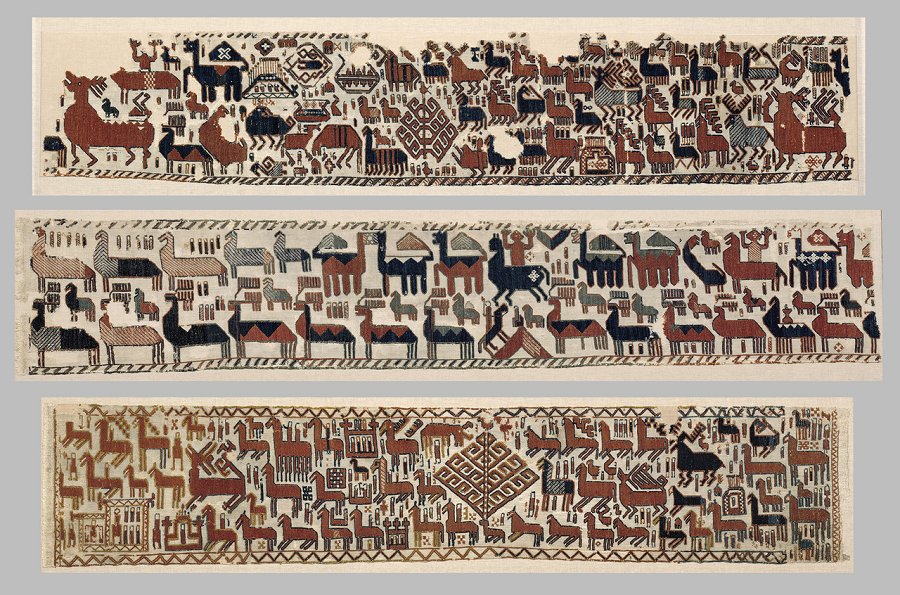 Överhogdal tapestries found 1909 in Överhogdal, Sweden. Public Domain
Överhogdal tapestries found 1909 in Överhogdal, Sweden. Public Domain
However, today the dominant theory, given the radiocarbon dating of the tapestries, is that the tapestry depicts the Ragnarok, the downfall of the world - a series of events foretold to occur in Norse mythology.
Research has established that the figures are made of plant dyed wool, which is interwoven with the linen with a special technique.
At first, it was believed these wool tapestries were woven in the days of the Vikings, between 800 AD and 1000 AD, as radiocarbon dating suggested in 1991.
Left: In 1910, the artist Paul Jonze visited Överhogdal and found the Överhogdal tapestry in a neighborhood near the church. Jonze took the picture of the church where the repair was going on at the time. Right: The tapestry was placed by the boy in the middle log-house. Image source
However, the preliminary dating of the textiles was updated in 2005 and it turned out that the tapestries date back to the period between paganism and Christianity in the Nordic countries around the year 1000-1100, in other words, the end of the Viking Age and the beginning of the Middle Ages. It means the textiles were created between 1040 and 1170 AD.
Are Motifs Taken From The Book Of Revelation Or Ragnarok Foretold In Norse Myths?
Different theories suggest that the Överhogdal tapestries depict imagery of both Norse and Christian origin.
The contents of the pictures have been much debated; some characters are related to paganism, clearly featuring the appearance of Odin's horse Sleipnir, while other pictures represent Christian imagery. The four surviving sections of the tapestries have 323 figures of people and 146 and 3 partial animals, all generally moving in the left direction.
Viking ship – motif from Overhogdal Tapestry. Image credit: Jämtlands läns Museum, Jamtli
People, horses, and various types of fairy-tale animals appear to be heading towards something and passing houses, churches, ships, and trees. One of these trees could be Yggdrasil.
Some scholars have suggested that what is shown is the Christianization of the region Härjedalen. It has been proposed that some of the motives are taken from the Book of Revelation.
Today the dominant theory is that the tapestry depicts Ragnarok (Ragnarök), a series of events foretold to occur in Norse myths and legends. Ragnarok is described in Völuspá, Völva's prophecy and many similarities between Völuspá and the motives on the tapestry have been found by researchers.
Research has established that the figures are made of plant dyed wool, which is interwoven with the linen with a special technique.
Today, the Överhogdal tapestries are stored at Jamtli Museum in Östersund, where a special room has been furnished for them. The storage conditions are the very best, and the room's architecture creates a Viking Age atmosphere.
Written by – A. Sutherland - AncientPages.com Senior Staff Writer
Copyright © AncientPages.com All rights reserved. This material may not be published, broadcast, rewritten or redistributed in whole or part without the express written permission of AncientPages.com
Expand for referencesReferences:
Nordanskog G. Föreställd Hedendom
Oscarsson, Ulla. Överhogdalsbonaderna
Karlin, Georg. Över-Hogdals tapeten
Sylwan, V. Om brickband : ett bidrag till Överhogdals- och Skogstapeternas teknik historia
More From Ancient Pages
-
 Ancient Mayan City Filled With Palaces, Pyramids And Plazas Discovered On Construction Site In Mexico
Archaeology | May 27, 2022
Ancient Mayan City Filled With Palaces, Pyramids And Plazas Discovered On Construction Site In Mexico
Archaeology | May 27, 2022 -
 Patara Lighthouse Built By Emperor Nero In 64 AD Will Shine Again
Archaeology | Mar 5, 2020
Patara Lighthouse Built By Emperor Nero In 64 AD Will Shine Again
Archaeology | Mar 5, 2020 -
 Clovis People Invented ‘Fluting’ Ancient Stone Weaponry
Archaeology | Apr 5, 2017
Clovis People Invented ‘Fluting’ Ancient Stone Weaponry
Archaeology | Apr 5, 2017 -
 Controversial Artifacts No One Wants To Examine Thoroughly: Is There Something We Are Afraid Of Discovering?
Ancient Technology | May 22, 2019
Controversial Artifacts No One Wants To Examine Thoroughly: Is There Something We Are Afraid Of Discovering?
Ancient Technology | May 22, 2019 -
 Scientists Solve The Mystery Of Cicero’s Puzzling Words By Analyzing Ancient Roman Coins – Evidence Of Financial Crisis?
Artifacts | Apr 6, 2022
Scientists Solve The Mystery Of Cicero’s Puzzling Words By Analyzing Ancient Roman Coins – Evidence Of Financial Crisis?
Artifacts | Apr 6, 2022 -
 Sun God Ra Was Venerated In Every Age Of Ancient Egypt’s Long Dynastic History
Egyptian Mythology | May 3, 2021
Sun God Ra Was Venerated In Every Age Of Ancient Egypt’s Long Dynastic History
Egyptian Mythology | May 3, 2021 -
 What Does The Brain Of The Homo Erectus Fossil With The Lowest Cranial Capacity Tell About Evolution?
Archaeology | Mar 2, 2023
What Does The Brain Of The Homo Erectus Fossil With The Lowest Cranial Capacity Tell About Evolution?
Archaeology | Mar 2, 2023 -
 Neanderthals May Have Been Carnivores – New Study
Archaeology | Oct 17, 2022
Neanderthals May Have Been Carnivores – New Study
Archaeology | Oct 17, 2022 -
 DNA In Viking Poop Sheds New Light On 55,000-Year-Old Relationship Between Gut Companions
Archaeology | Sep 5, 2022
DNA In Viking Poop Sheds New Light On 55,000-Year-Old Relationship Between Gut Companions
Archaeology | Sep 5, 2022 -
 Could Doggerland Be Europe’s True ‘North Atlantis’ Of Stone Age?
Featured Stories | Nov 19, 2018
Could Doggerland Be Europe’s True ‘North Atlantis’ Of Stone Age?
Featured Stories | Nov 19, 2018 -
 Art Historians Solve Mystery Of Raphael’s Tomb By Reconstructing His Face
Archaeology | Aug 7, 2020
Art Historians Solve Mystery Of Raphael’s Tomb By Reconstructing His Face
Archaeology | Aug 7, 2020 -
 Mysterious Denisovans – New Study Offers New Evidence
Fossils | Mar 25, 2021
Mysterious Denisovans – New Study Offers New Evidence
Fossils | Mar 25, 2021 -
 Secrets Of Cheops’ Pyramid: Does The Newly Found Chamber Contain An Iron Throne?
Archaeology | Jan 13, 2018
Secrets Of Cheops’ Pyramid: Does The Newly Found Chamber Contain An Iron Throne?
Archaeology | Jan 13, 2018 -
 Researchers Confirm Museum Shrunken Head As Human Remains
Archaeology | Aug 4, 2022
Researchers Confirm Museum Shrunken Head As Human Remains
Archaeology | Aug 4, 2022 -
 Mysterious Ancient Star-Shaped ‘Fossil’ Baffles Scientists – What Is It?
Archaeology | Feb 27, 2023
Mysterious Ancient Star-Shaped ‘Fossil’ Baffles Scientists – What Is It?
Archaeology | Feb 27, 2023 -
 A Remarkably Well-Preserved Wooden Well Dating Back To The Bronze Age Uncovered In Benson, Oxfordshire
Archaeology | May 10, 2024
A Remarkably Well-Preserved Wooden Well Dating Back To The Bronze Age Uncovered In Benson, Oxfordshire
Archaeology | May 10, 2024 -
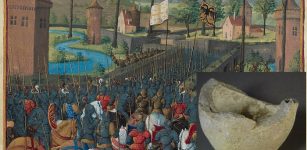 Ancient Hand Grenades: Explosive Weapons In Medieval Jerusalem During Crusades
Archaeology | Apr 26, 2022
Ancient Hand Grenades: Explosive Weapons In Medieval Jerusalem During Crusades
Archaeology | Apr 26, 2022 -
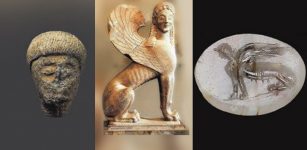 Rare Sphinx Seal Belonging To Roman Emperor Discovered In India Confirms Existence Of Legendary Muziris
Archaeology | Oct 1, 2020
Rare Sphinx Seal Belonging To Roman Emperor Discovered In India Confirms Existence Of Legendary Muziris
Archaeology | Oct 1, 2020 -
 Ancient Desert Mystery – Did Thousands Vanish Without A Trace Because Of An Ominous Prophecy And Revenge?
Ancient Mysteries | Nov 28, 2022
Ancient Desert Mystery – Did Thousands Vanish Without A Trace Because Of An Ominous Prophecy And Revenge?
Ancient Mysteries | Nov 28, 2022 -
 Ancient Mystery Of America’s Missing Metal – Can The Answer Be Found In Ancient Europe?
Ancient Mysteries | May 18, 2018
Ancient Mystery Of America’s Missing Metal – Can The Answer Be Found In Ancient Europe?
Ancient Mysteries | May 18, 2018

